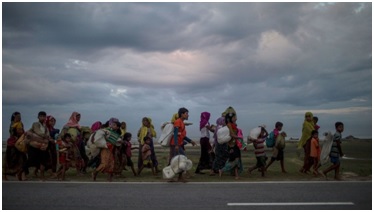

|
Overview
|
Context
The Fourth Periodic Labour Force Survey (PLFS) data released by the National Statistical Office (NSO), uncovers the much-awaited official statistics on ‘migration’.
Background
- A significant number of migrants had a harrowing time when the first ever lockdown was imposed on March 24, 2020, to restrain the Covid-19 pandemic.
- Among the vulnerable population, migrant workers had been the most exposed to unemployment and starvation as they suddenly lost their livelihood.
- Stranded in other States and metro cities with no work and income, they suffered economic problems and psychological trauma.
- Thus far, much has been said of the plight of migrants and reverse migration due to lockdown in the absence of official statistics.
- This PLFS data was collected during the July 2020 to June 2021 period, hence exhibiting significant statistics on the impact of lockdown on migrants using a cut-off point March 2020.
- Out of total migrants in India (that is, 28.9 per cent of total population), 3.14 per cent had migrated after ‘March 2020’ as shown in the report.
- Further, the unit level data of PLFS reported that during 2020-21, the ‘reverse migrant or returned migrant’ estimated to be 11.1 per cent of the total migrants.
- The returned migrants are those who moved to their earlier UPR (where they have resided any time in the past) from their last UPR. However, this reverse migration found to be as high as 53 per cent after the cut-off point ‘March 2020’.

Analysis
What does Migration and reverse migration means?
- Migration: Migration is defined as the movement of people over some distance (or at least from one "migration-defining area" to another) and from one "usual place of residence" to another.
- Reverse Migration: Reverse migrationis defined as the movement of people from a place of employment to their native homes.
Types of Migration:
- Rural to rural
- Rural to urban
- Urban to rural
- Urban to urban
|
Status of migration in India
Migration Rate: The migration rate is the percentage of migrants in the total population. |
How migration is beneficial?
- Bridges the gap of labor demand and supply.
- Skill development and knowledge enhancement.
- Improves the scope of employment, ensuring a better standard of living.
- Serves as the source of economic remittances.
- Providing a sustainable base for cultural exchange and social remittances.

How reverse migration impacts the economy?
- Rise in WPR: Reverse migration during the pandemic has raised the Worker-population ratio in the village areas.
- Increase in share of employment: Reverse migration has also increased the share of employment in the rural sectors.
- Shortfall of labour: On the other hand urban economy is facing a distinguished problem of shortfall of various skilled and unskilled labours, impacting the economic viability of the secondary sector.
- Technological deficit: Absence of technological development in the secondary sector might result into a severe shock to the industrial activity.
What are the major concerns over migration and reverse migration?
- The people who are economically successful and socially accepted broadly find it relatively easy to relocate and get easily accepted into other societies. This poses problems for the marginalized sections of society.
- In contrast, it is harder for those who are poor or from a marginalized group to enter many of these countries, and even if they do, they might not be able to mix.
- Socio- and Psychological Aspects: Migrants are frequently not readily accepted by their host countries and always treated as second-class citizens. As a result, interaction confidence is also impacted.
- Any person moving to a new country encounters numerous difficulties, such as homesickness and loneliness as well as difficulties adjusting to the local culture and language.
- Exclusion from Social Benefits and Political Rights: Migrant workers are denied numerous opportunities to exercise their political rights, such as the ability to vote.
- In addition, they are prevented from accessing assistance programs and policies by the requirement to present evidence of address, ration cards, voter identification, and Aadhaar cards, which is challenging given the turbulence of their existence.
Conclusion
Migration creates a positive impact in the functioning of the economy with better skilled development and supporting a strong base for skilled and unskilled labour supply. Reverse migration faced by Indian economy during the pandemic has severely impacted both the rural and urban economy.

